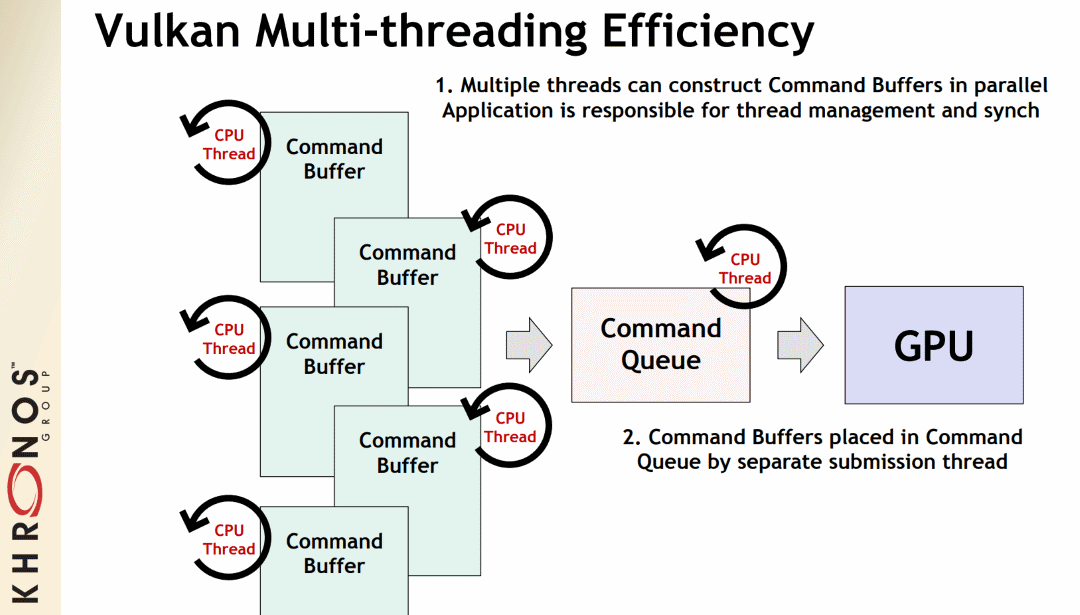permalink:/Notes/004-3d-rendering/vulkan/chapters/threading.html layout: default ---
Threading
One of the big differences between Vulkan and OpenGL is that Vulkan is not limited to a single-threaded state machine system. Before running off to implement threads in an application, it is important to understand how threading works in Vulkan.
The Vulkan Spec Threading Behavior section explains in detail how applications are in charge of managing all externally synchronized elements of Vulkan. It is important to realize that multithreading in Vulkan only provides host-side scaling, as anything interacting with the device still needs to be synchronized correctly
Vulkan implementations are not supposed to introduce any multi-threading, so if an app wants multi-CPU performance, the app is in charge of managing the threading.
1. Command Pools
Command Pools are a system to allow recording command buffers across multiple threads. A single command pool must be externally synchronized; it must not be accessed simultaneously from multiple threads. By using a separate command pool in each host-thread the application can create multiple command buffers in parallel without any costly locks.
The idea is command buffers can be recorded on multiple threads while having a relatively light thread handle the submissions.

Khronos' sample and tutorial show in more detail how to record command buffers in parallel.
2. Descriptor Pools
Descriptor Pools are used to allocate, free, reset, and update descriptor sets. By creating multiple descriptor pools, each application host thread is able to manage a descriptor set in each descriptor pool at the same time.